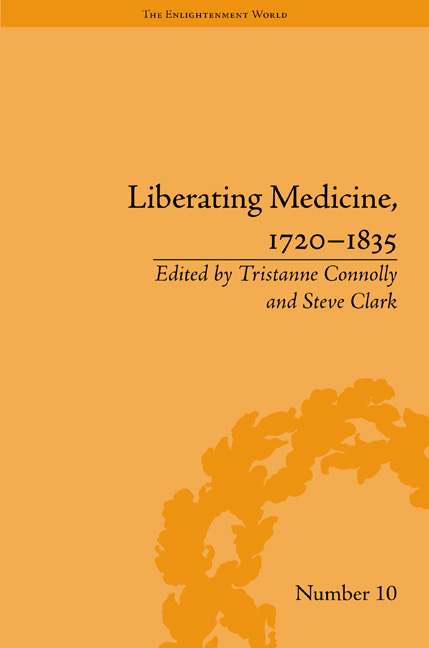Book contents
- Frontmatter
- CONTENTS
- Acknowledgements
- Contributors
- List of Figures
- Introduction
- I Spiritual Sickness and Hypochondria
- 1 Liberation and Consumption: Disease, Imperialism, and the Conversion of the Heathen in Hemans, Sigourney and Stowe
- 2 Freedom, Health and Hypochondria in Ignatius Sancho's Letters
- 3 ‘Uncle-Tommery’: Slavery and Romantic Medicine in Thomas Carlyle and Harriet Beecher Stowe
- II Health and Emancipation
- III Madness
- IV Anatomized and Aestheticized Bodies
- V Birth
- Notes
- Works Cited
- Index
1 - Liberation and Consumption: Disease, Imperialism, and the Conversion of the Heathen in Hemans, Sigourney and Stowe
from I - Spiritual Sickness and Hypochondria
- Frontmatter
- CONTENTS
- Acknowledgements
- Contributors
- List of Figures
- Introduction
- I Spiritual Sickness and Hypochondria
- 1 Liberation and Consumption: Disease, Imperialism, and the Conversion of the Heathen in Hemans, Sigourney and Stowe
- 2 Freedom, Health and Hypochondria in Ignatius Sancho's Letters
- 3 ‘Uncle-Tommery’: Slavery and Romantic Medicine in Thomas Carlyle and Harriet Beecher Stowe
- II Health and Emancipation
- III Madness
- IV Anatomized and Aestheticized Bodies
- V Birth
- Notes
- Works Cited
- Index
Summary
This essay takes its cue from a brief discussion of Felicia Hemans’ ‘Edith. A Tale of the Woods’ in my Consumption and Literature: The Making of the Romantic Disease (2006). In it I argued that Hemans's poem used consumption – the index of white, Christian spiritual supremacy – as a not-so-covert means of converting the heathen American-Indian to Christian and British ideology, thus naturalizing the violent processes of empire. Consumption serves to ‘liberate’ into Christianity and imperial destiny – via a dying white heroine – the Indian Other. Here I wish to extend this argument further into transatlantic Romanticism by discussing an apparent contradiction to the phenomenon of the redemptive consumption of the white Christian heroine in the American Lydia Sigourney's poem on the ‘Indian Girl's Burial’, a more traditional rendition in Sigourney's ‘The Consumptive Girl’, and, by way of a brief look beyond the Romantics, the archetypal Victorian example of Little Eva in Harriet Beecher Stowe's Uncle Tom's Cabin. This essay addresses – at least in passing – some of the categories, like gender, race and Romantic medicine, outlined by Joel Pace in his agenda for the development of transatlantic Romanticism.
Consumption, or tuberculosis of the lungs as we know it today, was a, or perhaps the, Romantic disease. By the mid-eighteenth century, consumption was identified as the illness most likely to visit the young, beautiful and intelligent. As George Cheyne put it: ‘I have always foretold, that these Symptoms [of nervous disease] (especially in tender, delicat, lively young Persons) would terminat [sic] in a real sensible Phthisis Pulmonum’. Phthisis was the Greek term for consumption: Pulmonum referred to the lungs. Consumption had various cognate terms such as ‘tabes’, ‘phthisis’ and even – vaguely – ‘decline’. Cheyne's argument about the sensibility of the nervous, refined individual leading to physical consequences, i.e. to consumption, paved the way for the Romantic understanding – not uncontested by doctors and laypeople alike, admittedly – of consumption as a spiritualizing and beautiful disease. Beauty and spirituality tended to be reserved for women, while genius and creativity was the male discourse of consumption by the late eighteenth century.
- Type
- Chapter
- Information
- Liberating Medicine, 1720–1835 , pp. 11 - 26Publisher: Pickering & ChattoFirst published in: 2014

